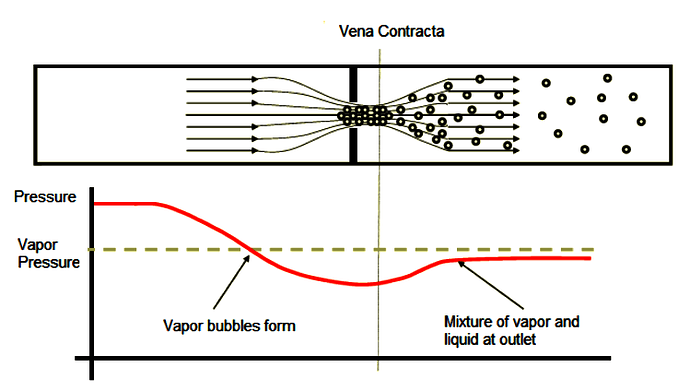At the point where the fluid’s velocity is at its highest, the pressure is at its lowest.
Assuming the fluid is incompressible (liquid), if the pressure falls below the liquid’s vapor pressure, vapor bubbles form within the valve and collapse into themselves as the pressure increases downstream.
This leads to massive shock waves that are noisy and will certainly ruin the equipment.
Valve Flashing
Requirements for occurrence of flashing:
The fluid at the inlet must be in all-liquid condition, but some vapor must be present at the valve outlet;
The fluid at the inlet may be in either a saturated or a subcooled condition; and
The valve outlet pressure must be either at or below the vapor pressure of the liquid.
Flashing effects:
Material damage is associated with the formation of sand-blasted surfaces;
Decreased efficiency - valve ability to convert pressure drop across the valve into mass flowrate is compromised.
How can flash damage be contained:
Under such scenario, there are two phases flowing downstream of the valve: liquid and vapor. Flashing cannot be eliminated in the valve if the downstream pressure is less than the vapor pressure of liquid.
However, the damage can be minimized by:
Hard face trim (using hard facing materials such as Stellite or Tungsten Carbide), more erosion resistant body material.
Increasing size of the valve, therefore reducing the velocity
Using angle valve – flow over plug
